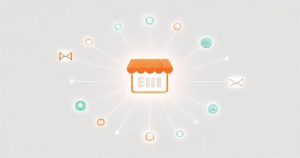In the vibrant and competitive world of online retail, Etsy sellers constantly seek innovative ways to enhance their operations and maximize their creative potential. Etsy integrations represent a pivotal solution for achieving these goals, offering a bridge between your beloved shop and a myriad of powerful third-party applications. These digital tools are designed to automate repetitive tasks, improve efficiency, and expand the capabilities of your Etsy business, ultimately freeing up valuable time for your craft.
The primary goal of leveraging Etsy integrations is to streamline repetitive processes, allowing sellers to dedicate more energy to creativity, product development, and customer engagement. From managing multi-channel inventory to automating shipping and financial reporting, these integrations transform manual operations into seamless, interconnected workflows. This strategic adoption of technology paves the way for sustainable business growth in a competitive marketplace, ensuring your shop remains agile and responsive.
Key Integration Types to Streamline Your Etsy Operations
Inventory and Multi-Channel Management
For sellers expanding beyond Etsy, inventory integrations are vital. They automatically sync stock levels across multiple platforms like Shopify, personal websites, or other marketplaces, preventing overselling and ensuring accurate inventory counts. This centralized control enhances efficiency, provides a comprehensive overview of product availability, and allows sellers to manage diverse product types, from custom jewelry to digital prints, without constant manual updates.
Shipping and Order Fulfillment Solutions
Shipping integrations automate the entire fulfillment process, from generating shipping labels and tracking numbers to notifying customers. Tools often connect directly with major carriers, potentially offering discounted rates and streamlining bulk order processing. This dramatically reduces the time spent on logistics, minimizes human error in address entry, and significantly improves the speed and reliability of order delivery for buyers worldwide, boosting overall customer satisfaction.
Accounting and Financial Management Software
Integrating accounting software with Etsy simplifies financial record-keeping. Sales data, expenses, and tax information are automatically imported, providing a clear and up-to-date financial picture of the business. This integration is crucial for accurate bookkeeping, simplified tax preparation, and making informed decisions about pricing, profitability, and overall business health, removing the burden of manual data entry and ensuring compliance.
Marketing and Customer Relationship Management (CRM)
Etsy integrations extend to marketing, allowing sellers to connect their shops with email marketing platforms for newsletters, promotions, and abandoned cart reminders. CRM tools help manage customer interactions, track purchase history, and personalize communications. These integrations are essential for building customer loyalty, driving repeat sales, and effectively promoting new product launches or seasonal offerings beyond the Etsy platform to a targeted audience.
Print-on-Demand (POD) and Production Partners
For creative entrepreneurs, POD integrations enable the sale of custom-designed products without holding physical inventory. When an order is placed on Etsy, the integration automatically sends it to a print provider for production and direct shipping to the customer. This model expands product lines, reduces upfront costs and risks, and automates a significant part of the production and fulfillment workflow, ideal for unique digital art or apparel.
Choosing the Right Etsy Integration: A Strategic Approach
Selecting the appropriate Etsy integration requires careful consideration. Evaluate each tool based on its specific features, cost structure—which can range from free basic versions to tiered monthly subscriptions (e.g., $9-$99/month for advanced features)—and compatibility with your existing tech stack. Understand the learning curve and review user testimonials to gauge reliability and customer support quality before committing to a paid plan.
Beyond features and cost, consider the integration’s scalability to ensure it can grow with your business. A solution might be perfect for a fledgling shop but inadequate for a high-volume seller. Prioritize solutions that directly address your most pressing operational challenges, offer clear return on investment, and seamlessly integrate with other platforms you utilize, such as social media scheduling tools or analytics dashboards.
Impact on Profitability: How Integrations Drive Business Growth
Strategic Etsy integrations significantly impact a seller’s profitability by enhancing efficiency and reducing operational costs. By automating tasks like inventory updates, shipping, and financial tracking, sellers save considerable time, which can be reinvested into product creation or marketing. Reduced manual errors also prevent financial losses from incorrect orders or missed tax deductions. The capability to manage higher order volumes and expand into new sales channels without proportionate increases in labor directly translates to improved profit margins.
For instance, an integration that offers discounted shipping rates can directly cut expenses, boosting per-item profitability. Similarly, marketing automation can increase customer lifetime value, driving repeat purchases. By freeing up valuable time from administrative tasks, sellers can focus on scaling their product lines, engaging with their community, and exploring new growth opportunities, ensuring a more robust and sustainable business model.
Navigating Potential Challenges with Etsy Integrations
While highly beneficial, implementing Etsy integrations can present challenges. Initial setup may require a learning curve and time investment, and compatibility issues or data synchronization errors can occasionally arise between different platforms or during updates. The cost of multiple subscription-based tools can also accumulate, potentially impacting smaller businesses if not budgeted carefully. Thorough research and a phased integration approach are essential to minimize disruption.
It is crucial for sellers to perform thorough research, utilize free trials where available, and gradually integrate new tools rather than overhauling their entire system at once. Investing in reliable integrations with robust customer support helps mitigate these potential difficulties and ensures a smoother transition for your business. Regular monitoring of data flow and proactive troubleshooting can prevent minor issues from escalating into major operational setbacks.
Conclusion: Empowering Your Etsy Business with Smart Integration Choices
Etsy integrations are powerful assets for any seller aiming to scale their business, optimize operations, and enhance customer satisfaction. By thoughtfully selecting and implementing tools for inventory, shipping, accounting, marketing, and production, sellers can transform their daily workflow, reclaim valuable time, and focus on their creative passions. Strategic integration is not just about automation; it is about building a more resilient, efficient, and profitable Etsy enterprise in the competitive e-commerce landscape, fostering long-term success.






